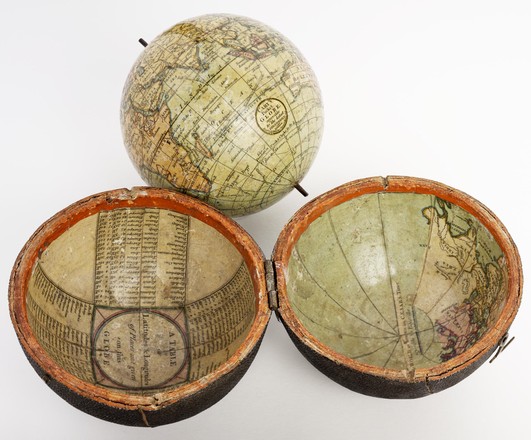
Cary's pocket globe agreeable to the latest discoveries
c. 1791
GLOBE 1
Hand-coloured globe in papier-mâché sharkskin covered case
Purchased from Hordern House in 2009
GLOBE 1
Hand-coloured globe in papier-mâché sharkskin covered case
Purchased from Hordern House in 2009
Pocket globes (pocket-sized globes) measured around 7.5 cm (3 inches) in diameter and were used as status symbols for gentlemen as well as educational tools for children. The popularity of pocket globes peaked in the first half of the 18th century.


 Back to list
Back to list